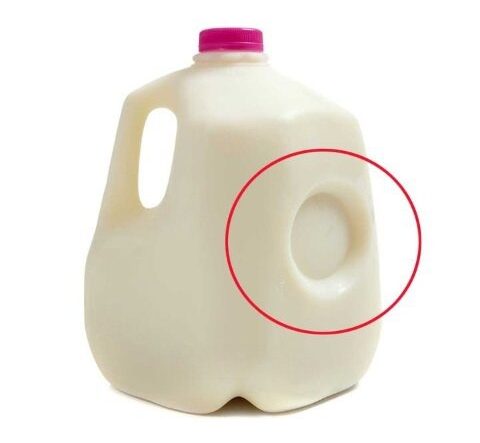This little circle saves a lot of messy accidents.
2. It Helps Prevent Spills and Cracks
Dropped a jug of milk before? Same.
The indentation acts like a shock absorber. If the jug gets bumped on the truck, dropped in the store, or knocked over at home, that dent helps the container flex instead of split.
Less cracking.
Less leaking.
Less mopping your kitchen floor at 7 a.m.
3. It Adds Strength Without Extra Plastic
Instead of making the jug thicker (and more expensive), designers use shape to create strength.
Think of how arches and domes support weight in architecture — the curve distributes force efficiently.
That dent reinforces the jug while keeping it lightweight and cost-effective. Smart design at its best.
⚠️ Surprise: The Dent Can Warn You About Spoiled Milk
Here’s a little trick most people don’t know:
If milk spoils, bacteria may produce gas, which creates pressure inside the jug.
When that happens, the dent can bulge outward.
A popped-out dent doesn’t always mean spoiled milk — but it’s definitely a sign you should check before pouring.
Why a Circle?
Out of all the shapes in the world, why choose a perfect round dent?
Because circles handle pressure better than anything else.
No corners, no weak points, just smooth, even stress distribution.
Plus, circles are easy to mold consistently — ideal for mass production.
Other Milk Jug Design Secrets
Once you start paying attention, milk jugs are full of smart engineering:
- The handle hole reduces plastic use while staying strong.
- Bottom ridges help the jug sit flat on imperfect shelves.
- Colored caps make fat content easy to identify at a glance.
A lot of thought goes into something we use without even noticing.

